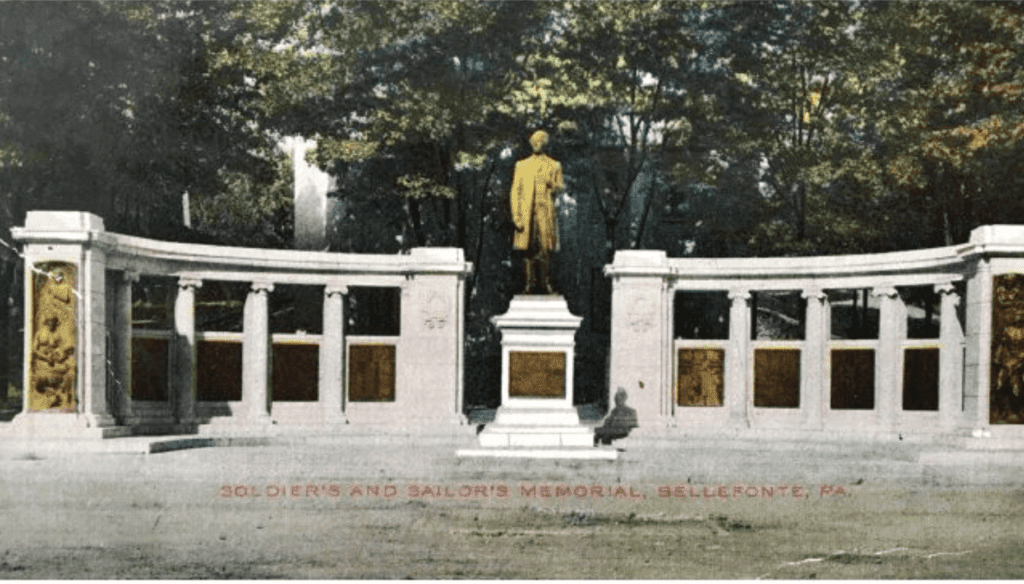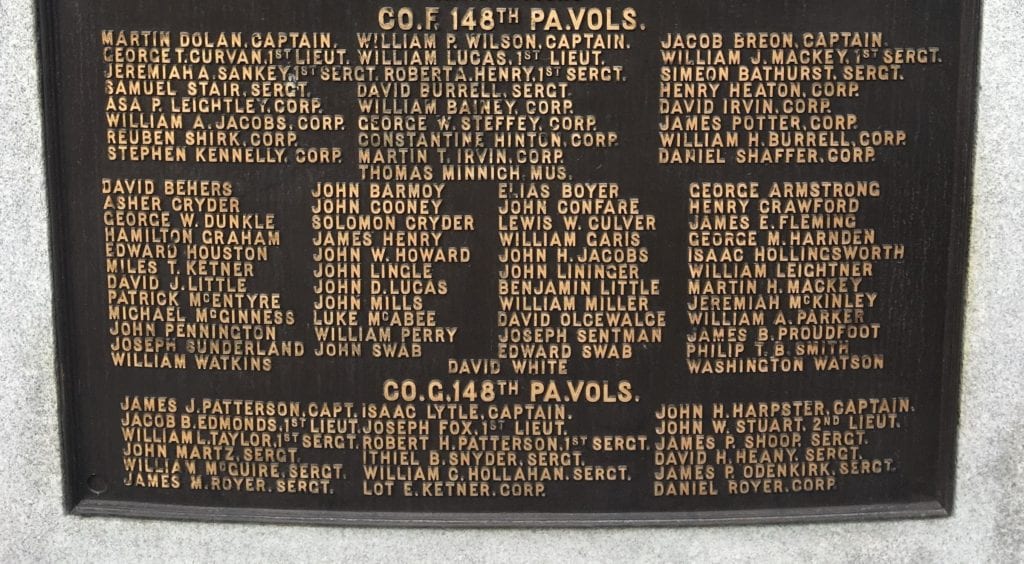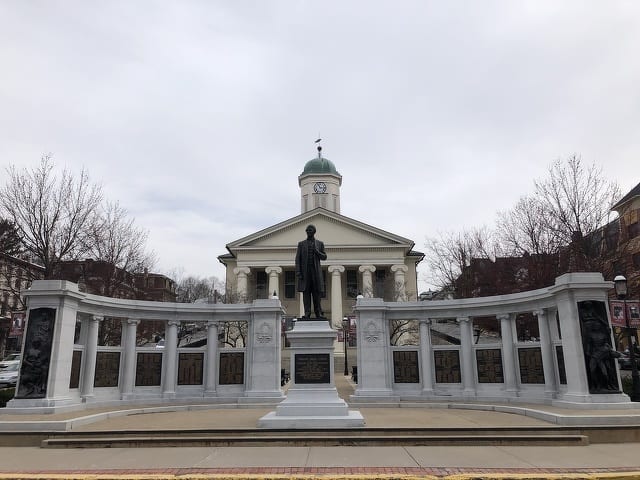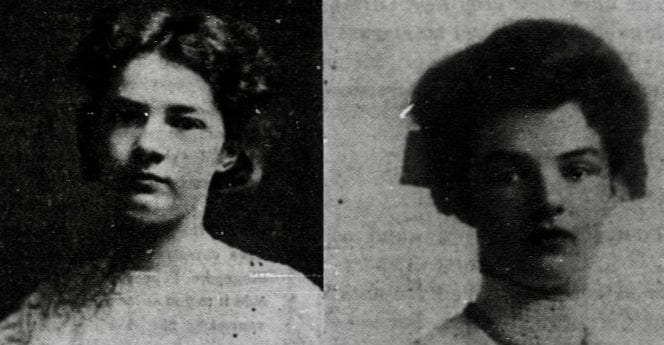On a hot June day in 1906, two daughters unveiled two memorials before a crowd of 10,000 people. Miss Margaret Burnet pulled a golden cord to reveal the statue of her great-grandfather, Governor Andrew Gregg Curtin. Miss Helen Fox, the daughter of the late Lieutenant Joseph Fox, held an identical cord in her hand, awaiting the signal to unveil the Soldiers and Sailors Memorial in honor of its 3,800 veterans, which included her father.
However, as the day’s events would illustrate, things do not always go according to plan. The story of this ceremony helps to unveil the past, bringing to light the history of a few of those embronzed Centre Countians who served the Union during the Civil War.
Before the unveiling, soldiers young and old gathered in Bellefonte from all over the region, according to the Democratic Watchman. They marched up and down Allegheny Street, accompanied by bands from Clearfield, Coleville, Curtin, Milesburg, and State College. The Sheridan Troop came by special train from Tyrone, but it was the State College Cadets who received the most enthusiastic applause from the crowd. The 400 Cadets represented Penn State’s proud military tradition as a land-grant college. Hundreds of school children sang patriotic songs. Governor Pennypacker reviewed the parade and gave a speech while Miss Burnet successfully pulled her cord, unveiling Curtin’s statue.
It is fitting that the likeness of Pennsylvania’s Civil War governor stands amidst the Soldiers and Sailors Memorial. Nicknamed the Soldiers’ Friend, Curtin often traveled to camps and battlefields, personally encouraging the soldiers. A few days after the Battle of Chancellorsville, the “Old War Governor” visited the 148th Pa. Volunteers after it experienced its first baptism of fire.
There, after suffering heavy losses, the regiment mustered for a dress parade to receive their governor. According to an account in The Story of Our Regiment: A History of the 148th Pennsylvania Vols., Dr. Fisher, assistant surgeon of the 148th, reported that Curtin mounted a large stump to console the men, but stopped in the middle of this heartbreaking address and simply said, “‘Where’… pointing his hand over toward the river, … ‘where is my friend Lieutenant Bible … where is Lieutenant Stevenson? Their bodies, with those of many others of my personal friends, are lying on the other side of that river.’” Curtin broke into tears. Fisher then recalled, “It was the Regiment’s turn to sympathize and try to comfort the heart of the Chief Executive.”
At the 1906 dedication, it was Helen Fox’s turn to unveil the monument honoring men such as her father, who was born in Ireland in 1844. After emigrating, Joseph Fox found employment as a carpenter at Centre Furnace for Robert M. Forster. In 1862, 18-year-old Fox volunteered with Forster to serve in the 148th, the “Centre County Regiment,” under the command of Colonel James Beaver. At the Battle of Gettysburg, on the second day, Forster was among the casualties in the Wheat Field. Fox retrieved the body of his fallen captain, used his carpentry skills to build his former employer a coffin, and buried him there. Forster’s remains were later reinterred at Spring Creek Presbyterian Cemetery.

Lieutenant Fox survived many campaigns. In 1864, at the Battle of Ream’s Station, he “stubbornly fought hand to hand the attacking party until he received seven bayonet wounds in the face and neck.” In that same battle, Beaver was wounded a fourth time, marking the end of his war experience. He had just returned to the front after recovering from Petersburg, and was still buckling his officer’s sword when he was hit through the thigh, requiring amputation at the hip in a farmhouse kitchen.
In life, just as in war, things do not always go as planned. Though Joseph Fox survived the Civil War, he was not at the 1906 ceremony because he was killed in a train accident in Bellefonte when Helen was just a child. Standing in front of the courthouse at the ceremony, Helen Fox quietly waited for her moment, perhaps thinking of her father. However, before the signal was given, someone in the crowd pulled the cord, prematurely unveiling the memorial. Maybe it was one of the school children who did not understand the meaning of it all. Regardless, the honor belonged to Helen, as it always will.

The next time you walk or drive by the memorials in front of the Centre County Courthouse, take a moment to think of Helen, and the veterans we must continue to remember, honor, and unveil for posterity.

Local Historia is a passion for local history, community, and preservation. Its mission is to connect you with local history through engaging content and walking tours. Local Historia is owned by public historians Matt Maris and Dustin Elder, who co-author this column. For more, visit localhistoria.com.
This story appears in the March 2021 issue of Town&Gown.



